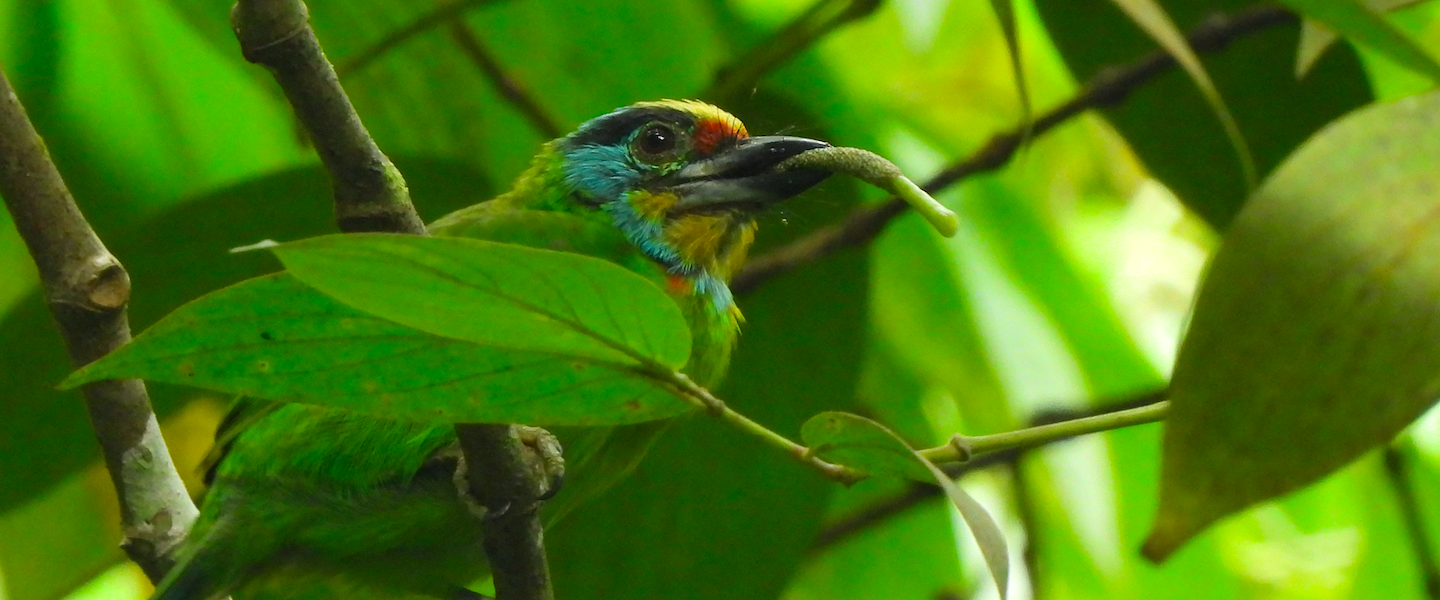Bukit Fraser was the first rainforest destination during my birding trip with Darío Gijón along Southeast Asia. After several days in Singapore, we took a night bus to Kuala Lumpur and planned to reach this montane area in the day. Built by British settlers as a holiday destination far from the lowland heat, this montane rainforest is today a very accessible prime birding location close to KL. We deployed only few days to West Malaysia but our stay in Bukit Fraser was extremely productive and changed our perspective of the trip.
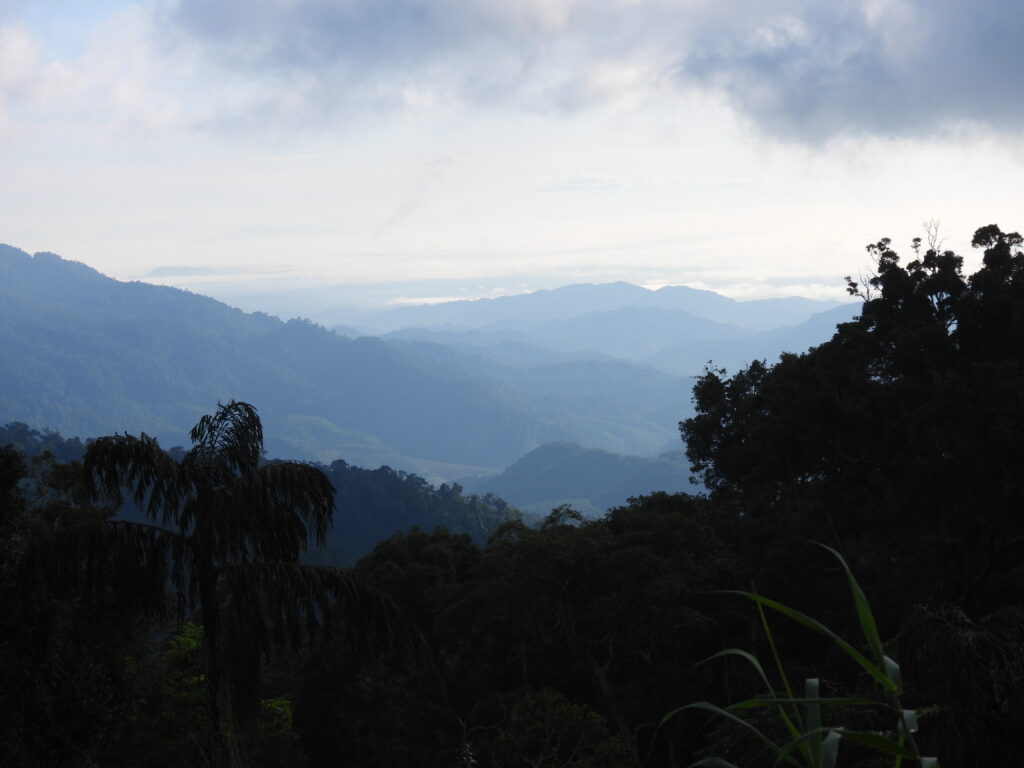
A train from KL brought us to Kuala Kubu Bharu. While we waited for any cab that could bring us up the hill — the price seems fixed —, we found several red-eyed bulbuls (Pycnonotus brunneus) and little green pigeons (Treron olax) in the forest around the train station. The taxi driver kindly offered to stop on the way so we could snap the stunning landscape — and coincidentally lifer a gold-whiskered barbet (Psilopogon chrysopogon).
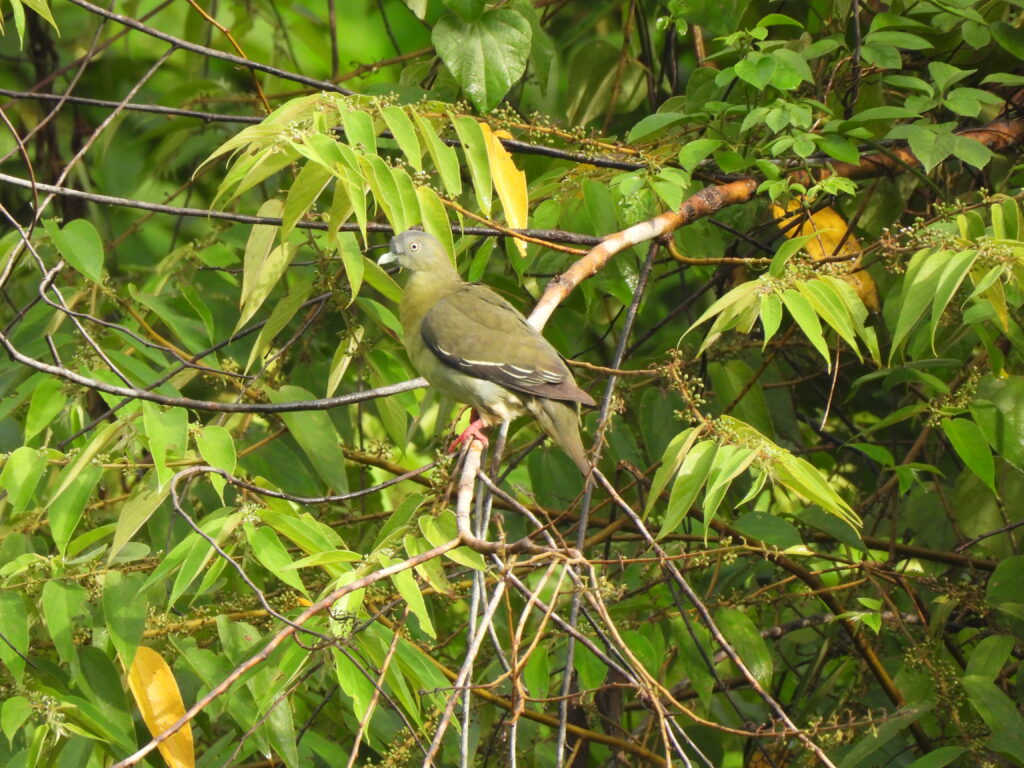
Bukit Fraser has different mythical trails and we had just over two days to explore them. After settling in comfortable Puncak Inn, right in the main square, we walked north through the town towards the diversion to Bishop’s trail. We arrived just after 10:00 — this being our first time during the trip birding in the rainforest, we initially had a hard time connecting with birds. The movement of a Malayan giant squirrel (Ratufa bicolor) in the canopy, the buzz of insects and the distant calls of siamangs (Symphalangus syndactylus) and black-browed barbets (Psilopogon oorti) were the sounds of the stunning but otherwise silent forest.
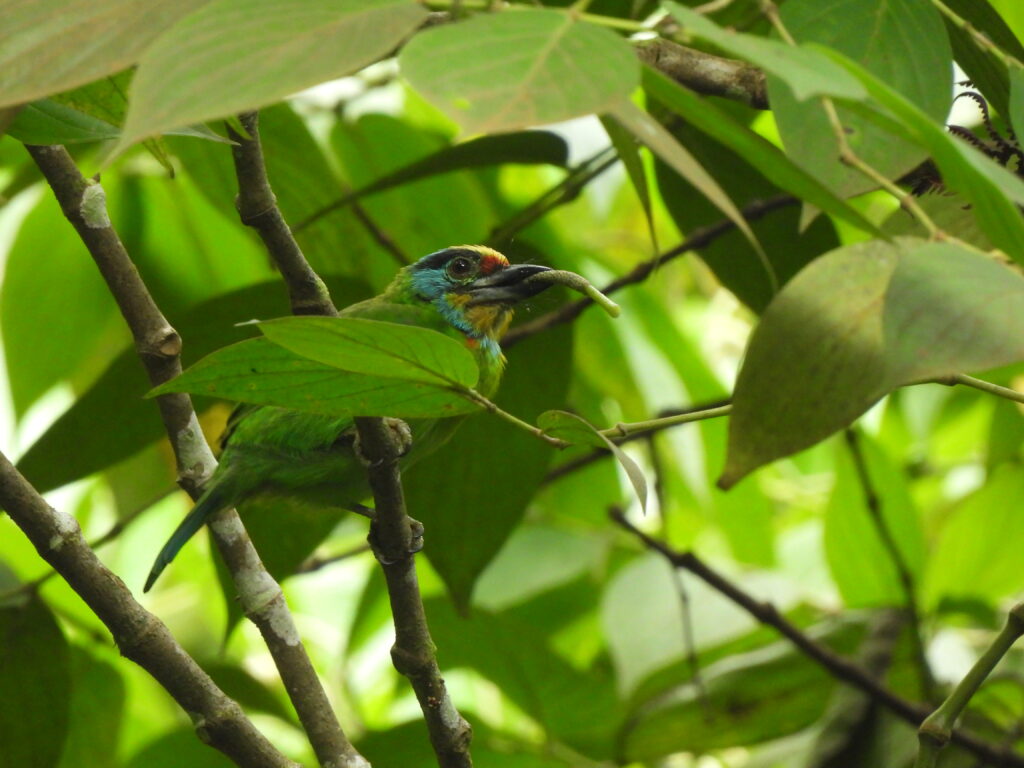
We made it to a wooden structure under the canopy and suddenly everything changed. A large flock of birds quickly passed through the trees around us. The diversity was overwhelming — so much so that we had a hard time keeping up.
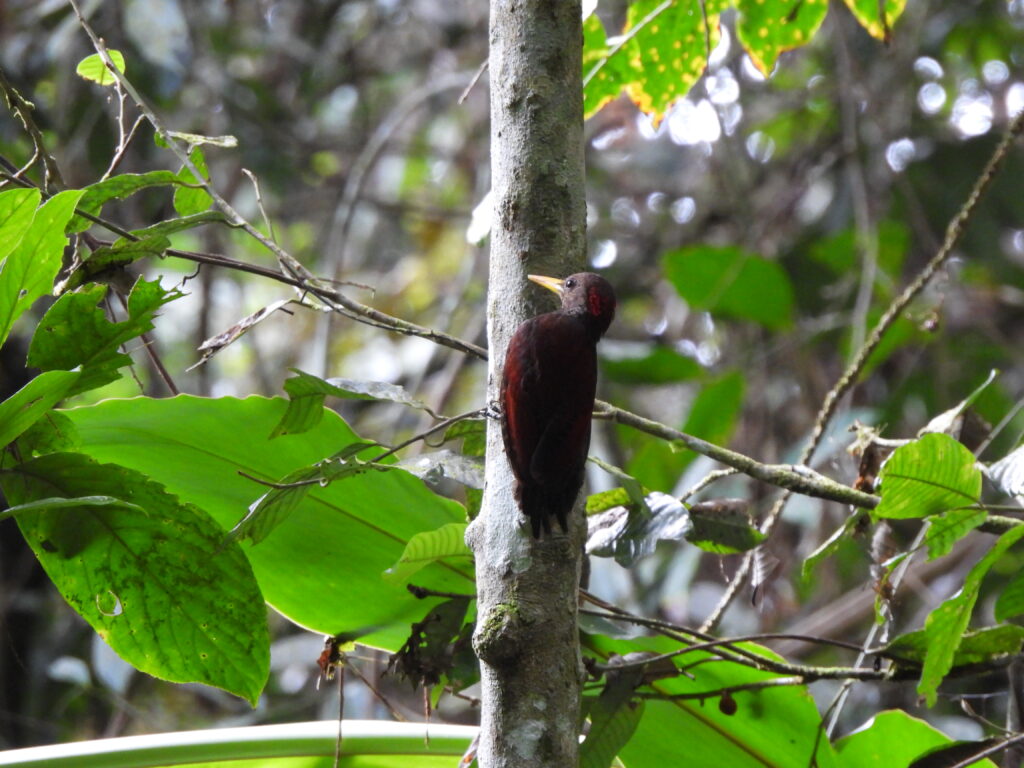
Among this first mixed-species foraging flock, we managed to identify a maroon woodpecker (Blythipicus rubiginosus), a tiny speckled piculet (Picumnus innominatus), two white-throated fantails (Rhipidura albicollis), several lesser racket-tailed drongos (Dicrurus remifer) and mountain fulvettas (Alcippe peracensis) and a chestnut-crowned warbler (Phylloscopus castaneiceps). However, some birds were best IDed from camera pictures: golden babbler (Cyanoderma chrysaeum), gray-throated babbler (Stachyris nigriceps) and the stunning black-and-crimson oriole (Oriolus consanguineus) — which moved with the drongos and we first thought was one of them!
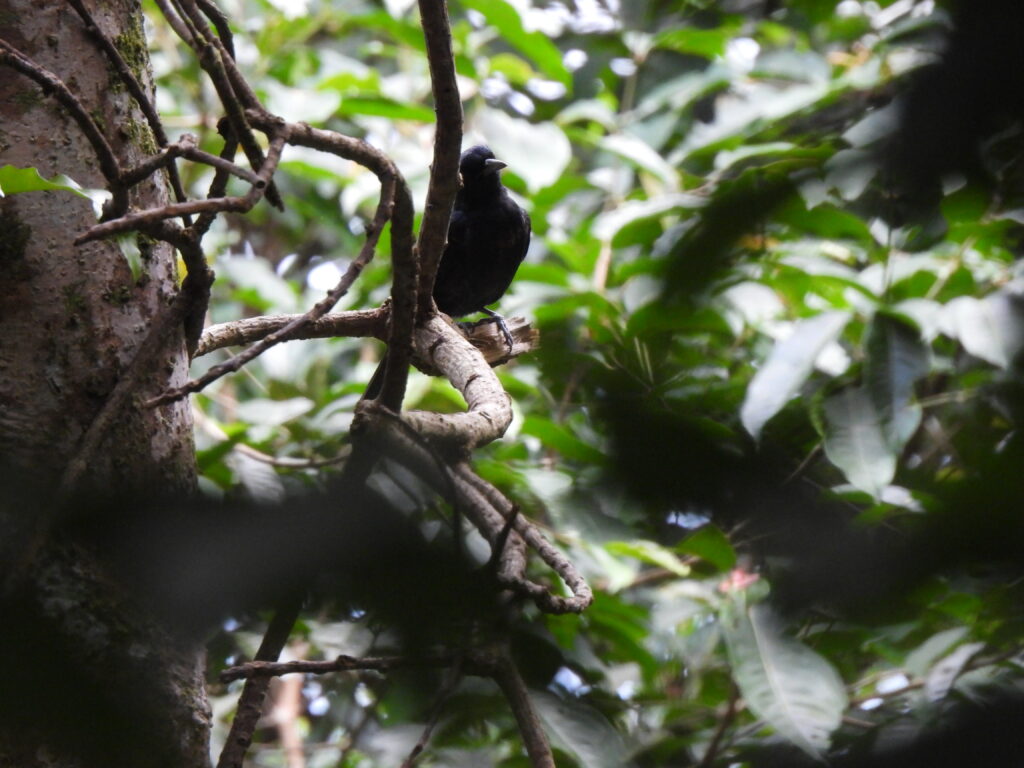
The rush and neck pain lasted for a mere couple of minutes and then the relative calmness took the forest again. This became the prevailing note in the rainforest, and we quickly got the hang of it. While trying to build some skills, we got awesome views of a big target, the fire-tufted barbet (Psilopogon pyrolophus), as some birds called just like cicadas.
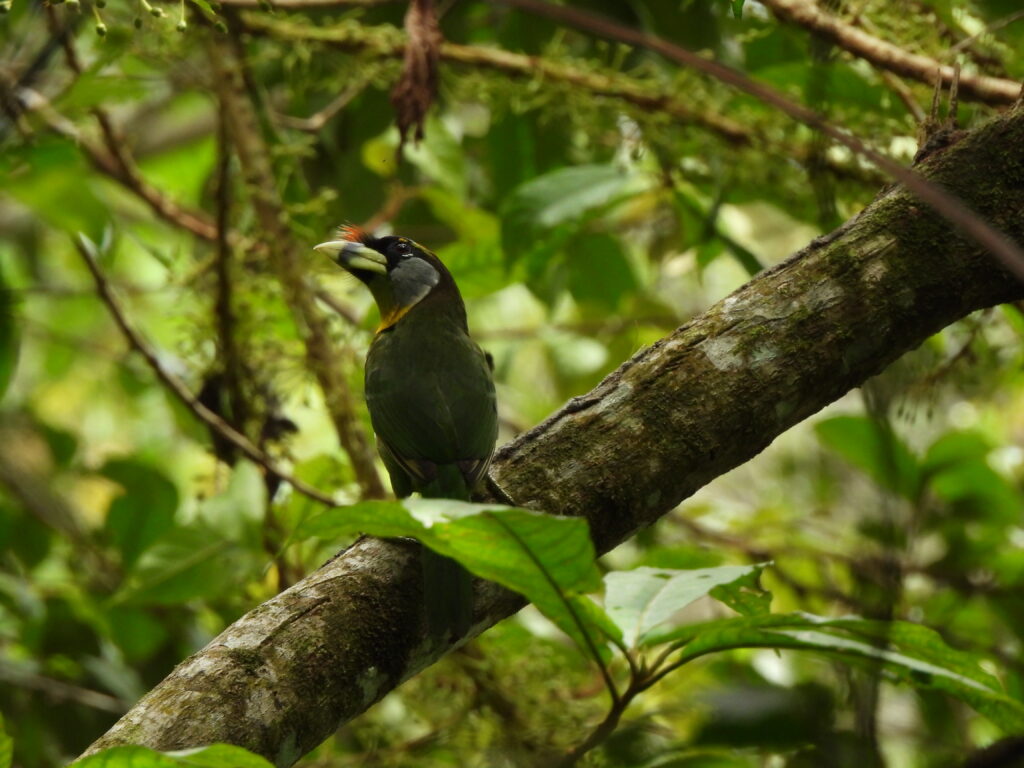
However, strolling around the town often provided better views of wildlife. We mostly ate at fantastic restaurant Arzed, and walking up and down Bukit Fraser resulted in awesome views of local specialties throughout our stay: large niltava (Niltava grandis), black-throated sunbird (Aethopyga saturata), Oriental magpie-robin (Copsychus saularis), streaked spiderhunter (Arachnothera magna), long-tailed sibia (Heterophasia picaoides) or chestnut-capped laughingthrush (Pterorhinus mitratus). At one point Darío spotted a pair of black-thighed falconets (Microhierax fringillarius) for us, just around the restaurant.
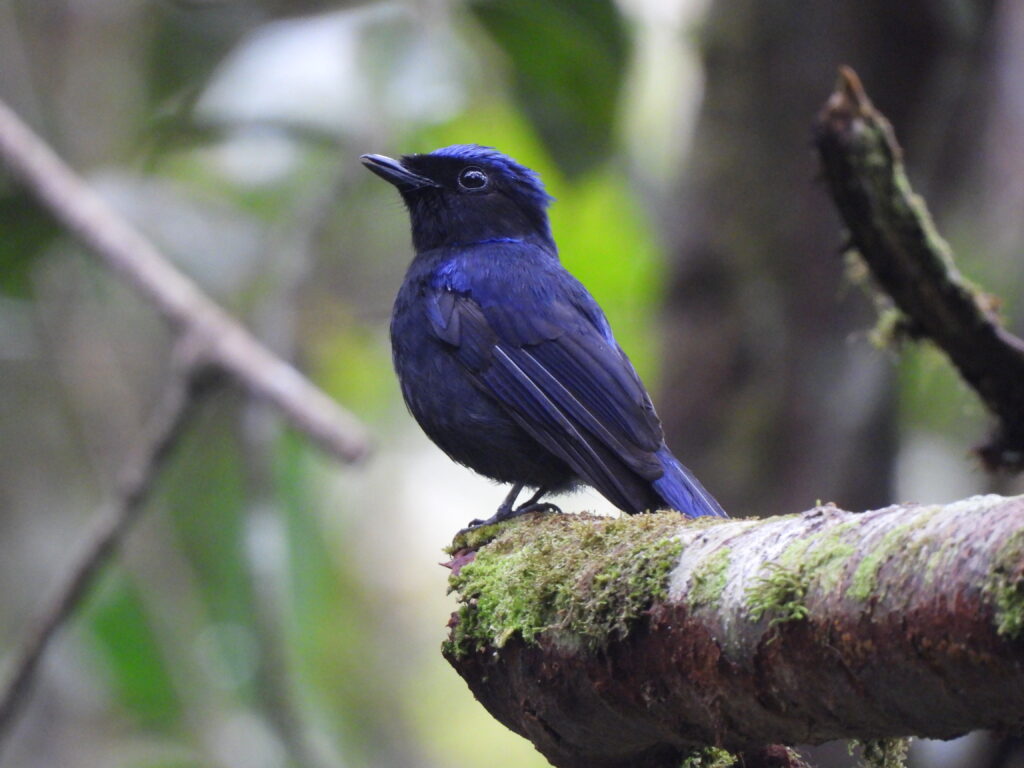
After dinner, we walked around town with our torches, mainly in the area around the beginning of Bishop’s trail. We met a couple of Swiss nature enthusiasts and looked for wildlife together. Besides hearing several mountain scops-owls (Otus spilocephalus), we found a stunning Siamese Peninsula pit viper (Trimeresurus sabahi fucatus). The fog at night was extremely thick.
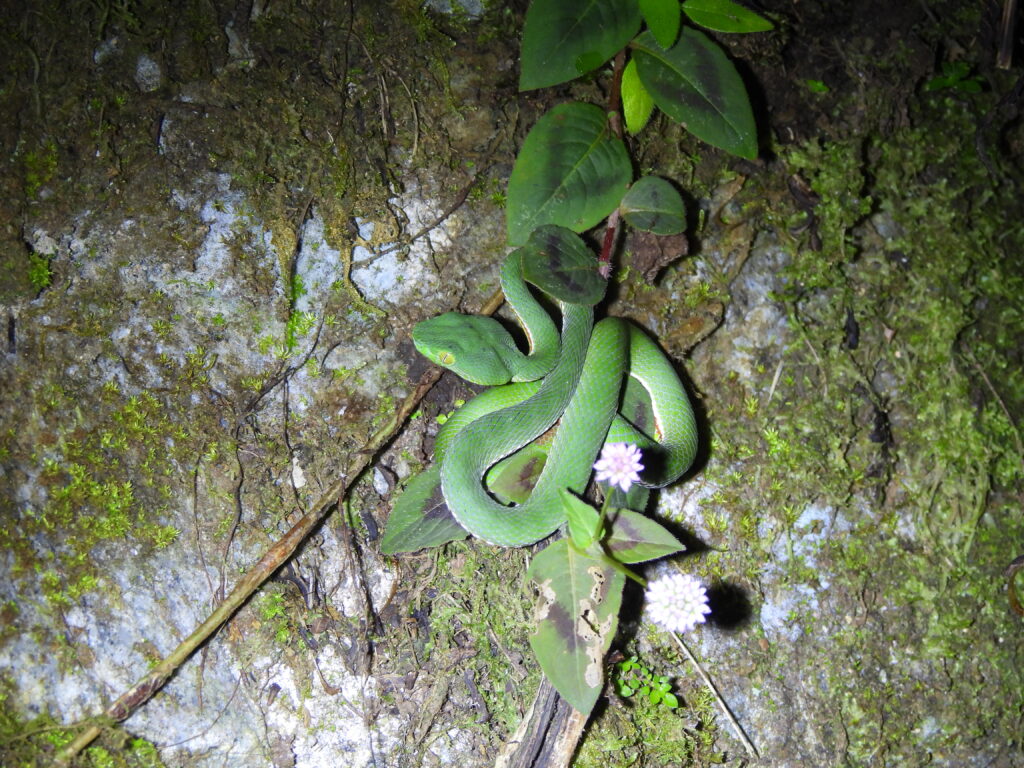
The pavement under street lamps gathered numerous arthropods of unimaginable shapes and sizes: large katydids, beetles and moths, including several tropical swallowtail moths (Lyssa zampa) and a stunning Atlas moth (Attacus atlas), one of the world’s largest lepidopterans!
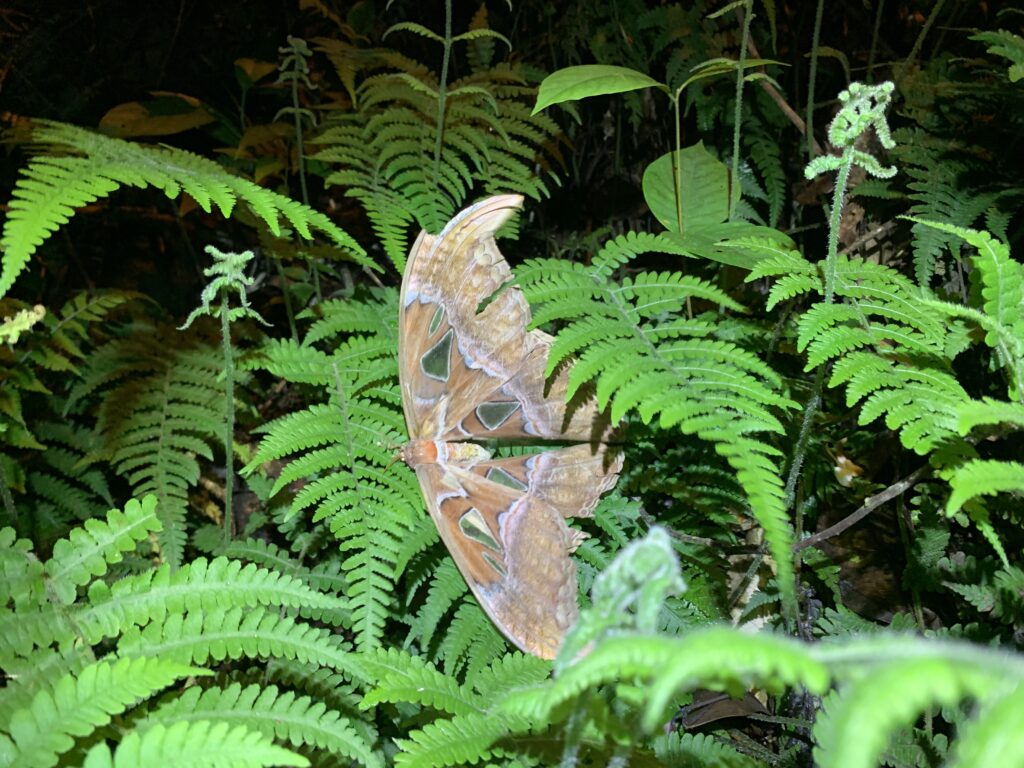
The first morning started well before dawn. Darío and I rushed downhill in the thickest fog, aiming to make it to mid altitude forest around The Gap, a renowned area some 8 km downhill from Bukit Fraser with several bird specialties. We connected with the first birds 2 km downhill still at night: two Malaysian eared nightjars (Lyncornis temminckii) calling in the distance. Great!
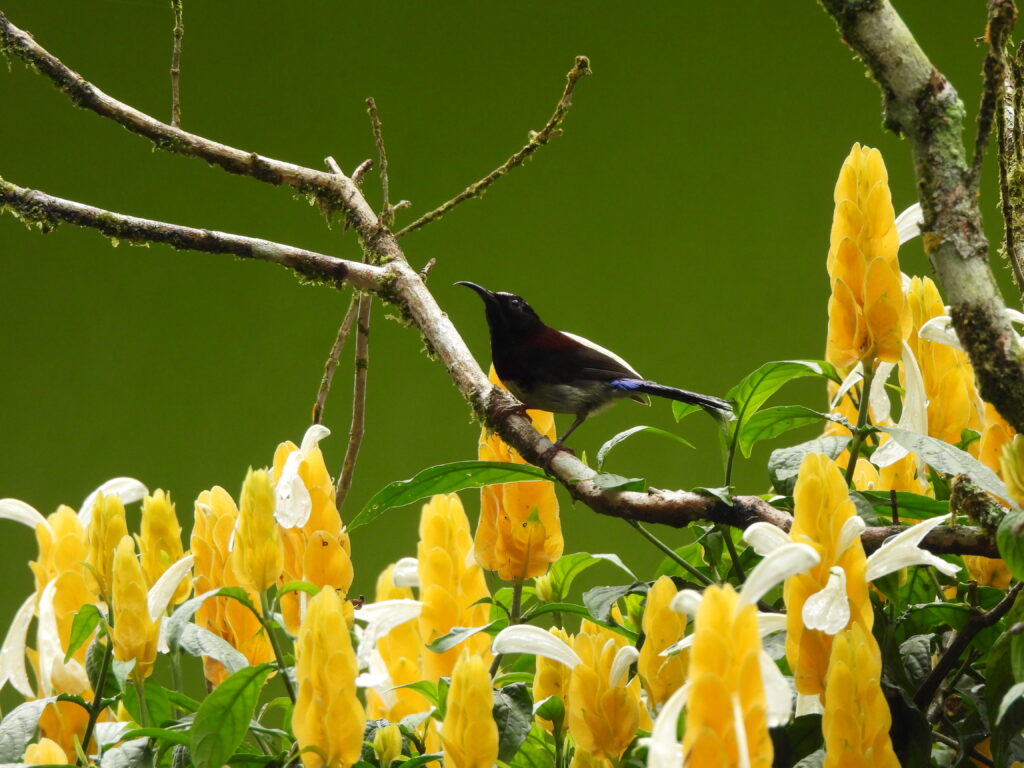
The first morning lights brought a shower that evolved into an unforgiving downpour. However, we managed to connect with different goodies: mountain imperial pigeon (Ducula badia), little cuckoo-dove (Macropygia ruficeps), blue nuthatch (Sitta azurea), ochraceous bulbul (Alophoixus ochraceus), Hume’s white-eye (Zosterops auriventer) and yellow-bellied warbler (Abroscopus superciliaris). Perhaps the most awaited find happened under the rain too: Darío spotted our first red-headed trogon (Harpactes erythrocephalus).
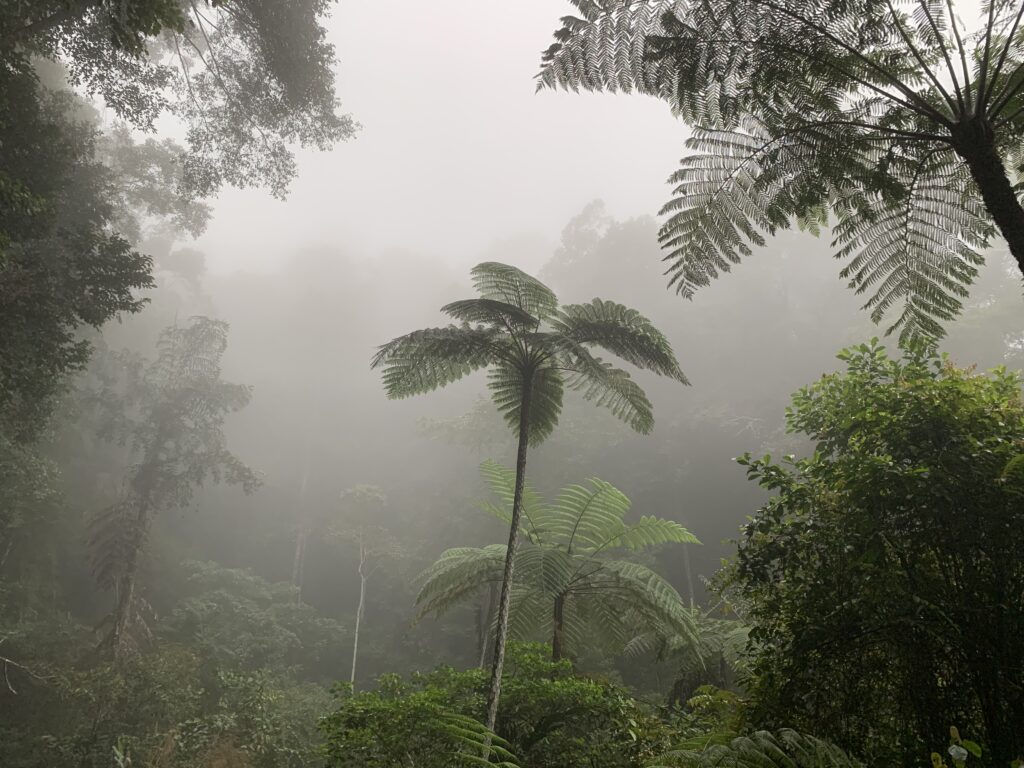
We kept walking, hoping the rain would stop of somebody would be kind enough to give us a lift back to the hill. We eventually bumped into a group of birders, Mr. Peter Pang and his colleagues, who looked for mega pin-tailed parrotfinches (Erythrura prasina) under the rain in a flowering bamboo patch just next to the road. Chatting and waiting, we realized Mr, Peter is the owner of a place we would stay at in Borneo the following week, Sepilok Forest Edge (read more about it here), and we got to understand the value of doing some research about how to find certain target birds.
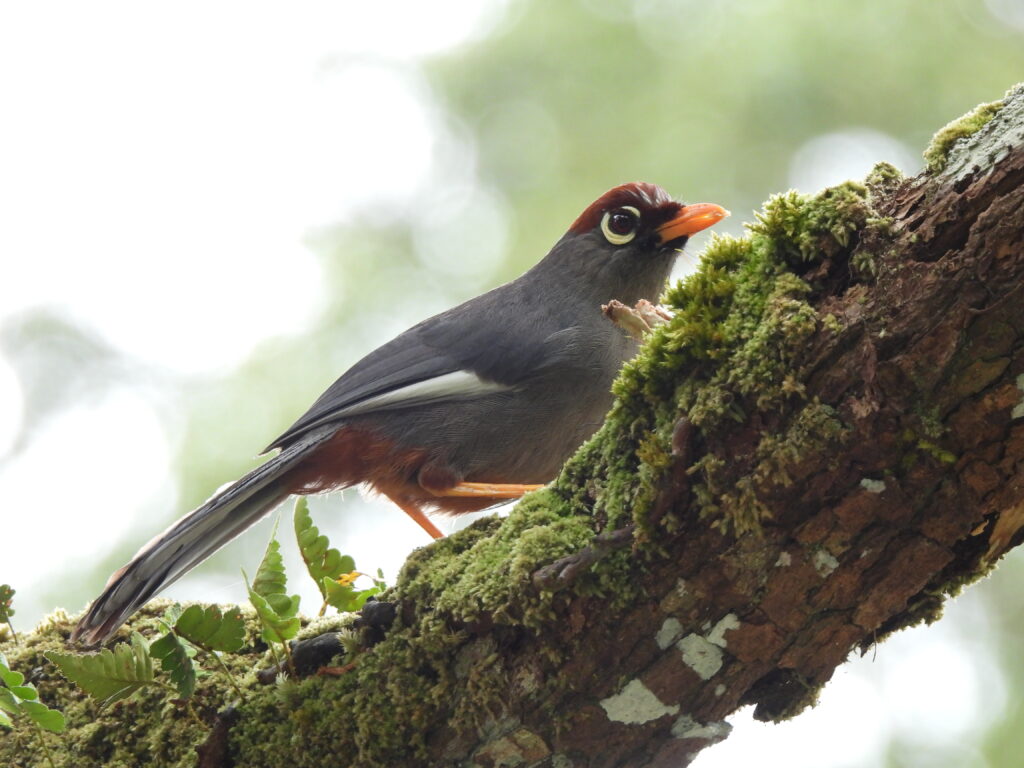
We were soaked and tired but still excited. These birders kindly drove us back to town and unintentionally changed our approach of the trip for the better. As soon as we made it back to Puncak Inn, we set our clothes to dry and read a good deal about Bukit Fraser. Near-endemic Malayan laughingthrush (Trochalopteron peninsulae) and Malayan partridge (Arborophila campbelli) are seldom seen elsewhere, and we figured out the spot to look for them — Jalan Richmond, an alleyway surrounded by the forest. Just some minutes walking away from our accommodation.
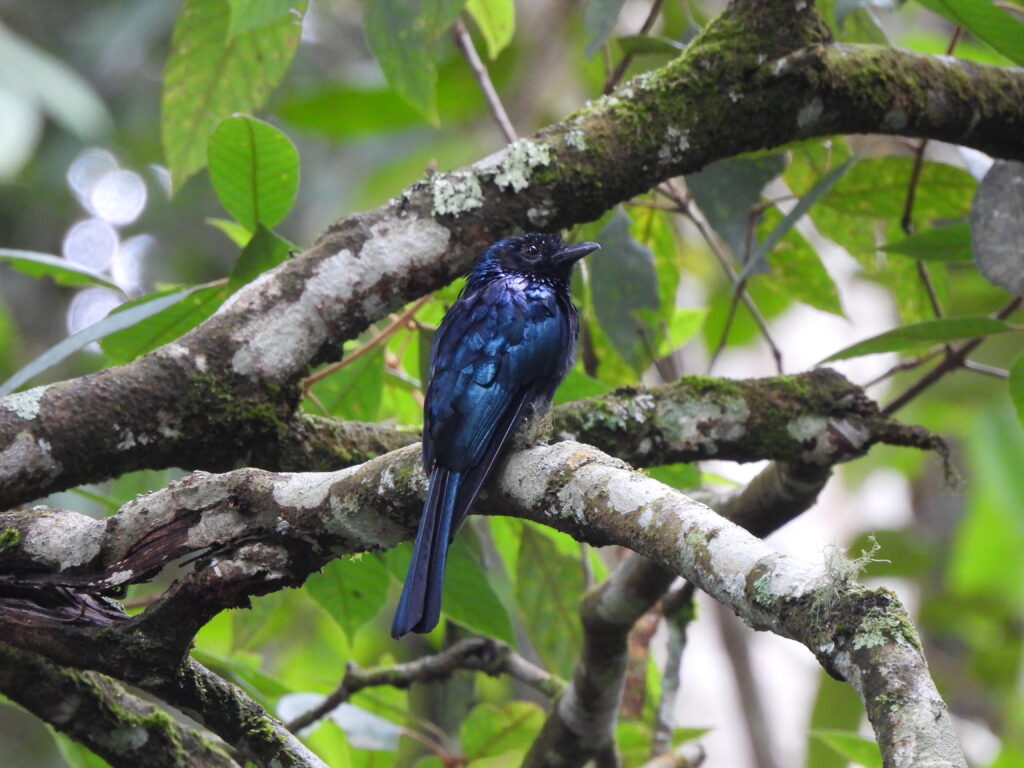
The downpour stopped after lunch and the silence of the forest faded with it. The canopy at Jalan Richmond was piping with life and offered numerous lifers, including collared owlet (Taenioptynx brodiei), two greater yellownapes (Chrysophlegma flavinucha) around the nest, a flock of gray-chinned minivets (Pericrocotus solaris), some mountain bulbuls (Ixos mclellandii) and a Malayan cuckooshrike (Coracina larutensis).
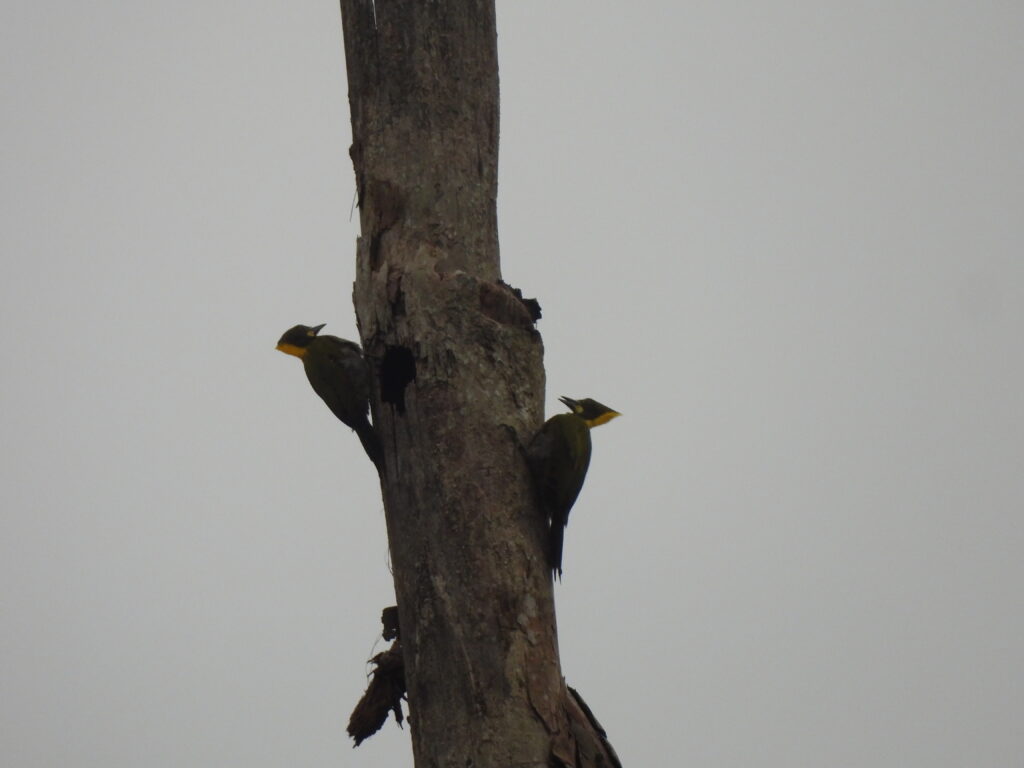
A mixed-species flock dominated by mountain fulvettas featured several orange-bellied leafbirds (Chloropsis hardwickii) and a stunning sultan tit (Melanochlora sultanea). I recently learned that the calls of Himalayan striped squirrels (Tamiops mclellandii) contribute to birds gathering in these forests, and understood why we saw many of them foraging close to birds. Something we would also realize later in the trip is that some of these species are general highland specialists that we would later find on other montane forests of Vietnam and Borneo.
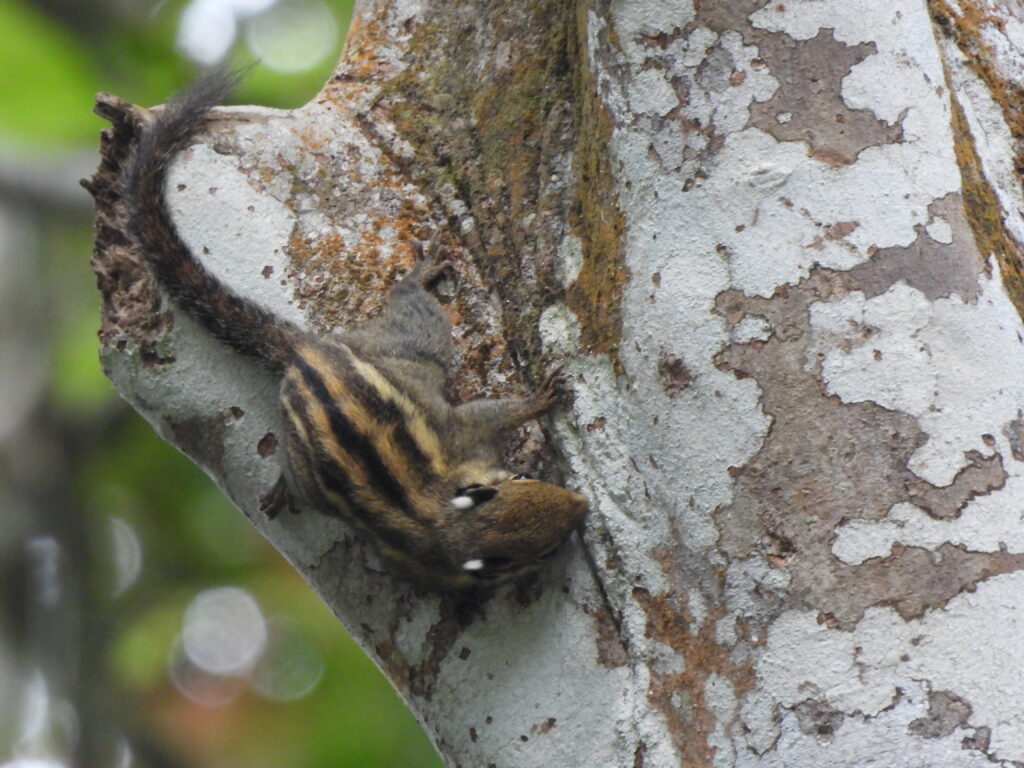
We were entertained enough looking at the canopy despite the two targets did not show up. However, we were pleasantly surprised to connect with a rusty-naped pitta (Hydrornis oatesi) calling from the understory just some 15 m from the road — an unexpected goodie, quite scarce throughout its distribution range. Besides, we also connected with buff-breasted babblers (Pellorneum tickelli), which seemed pretty abundant once we picked their call.
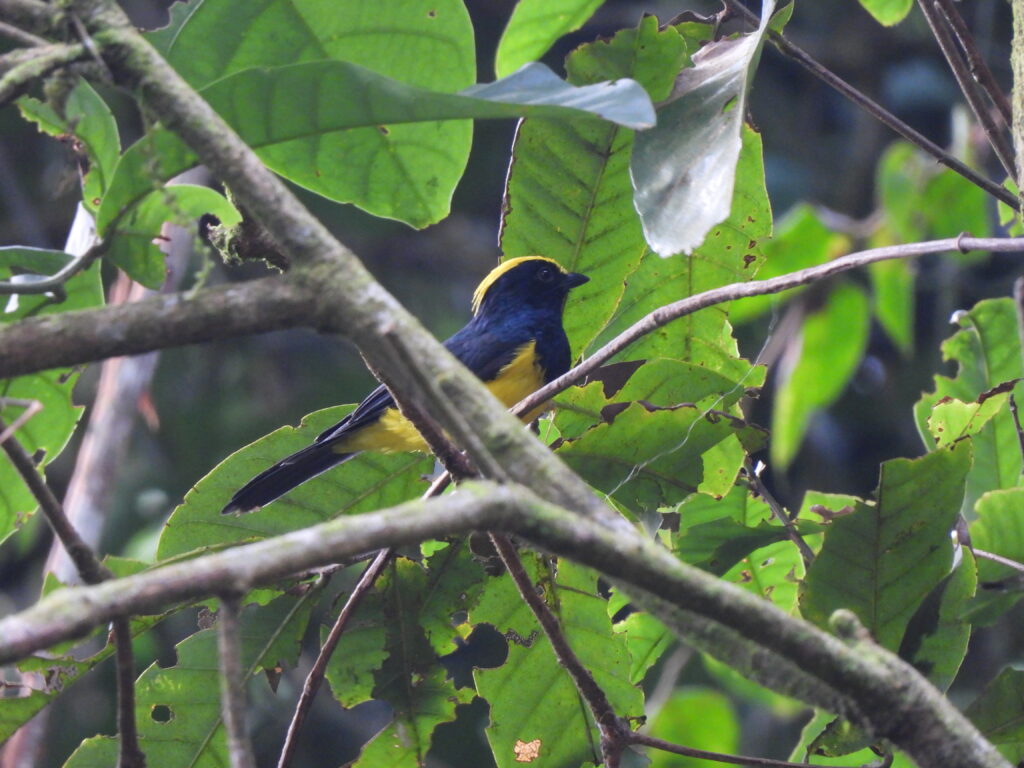
Having visited Bishop’s trail, The Gap and Jalan Richmond, we had to pay a visit to Telekom Loop. We walked the circular road named after the TV antennas through montane rainforest on our second and last morning in Bukit Fraser. I had a completely different impression on birding as compared to our first outing: we managed to pick the jizz and calls of common species, and new birds quickly called our attention. We connected with our first green-billed malkohas (Phaenicophaeus tristis), erpornis (Erpornis zantholeuca), black-crested bulbul (Rubigula flaviventris), blue-winged minla (Actinodura cyanouroptera) and white-rumped shama (Copsychus malabaricus).
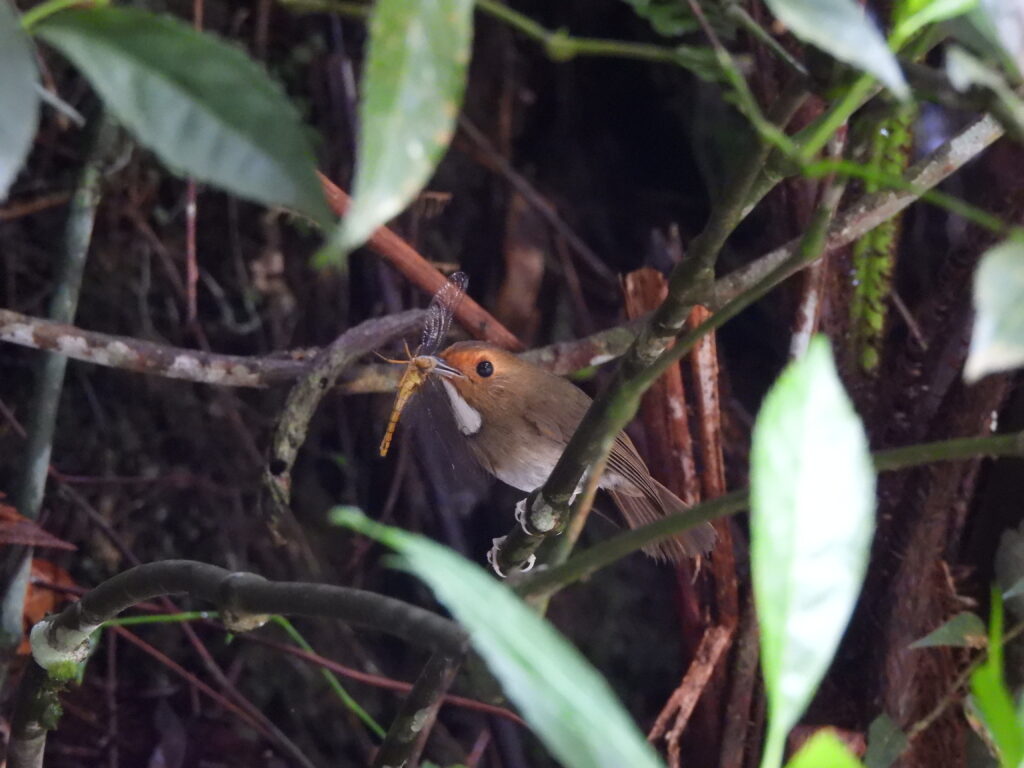
The forest was generally dense, but few clearings offered awesome views of the rugged relief covered in different shades of green. Under the roof of a building next to the road, a colony of dozens of plume-toed swiftlets (Collocalia affinis) had built their nests and flew in and out like bats in a cave.
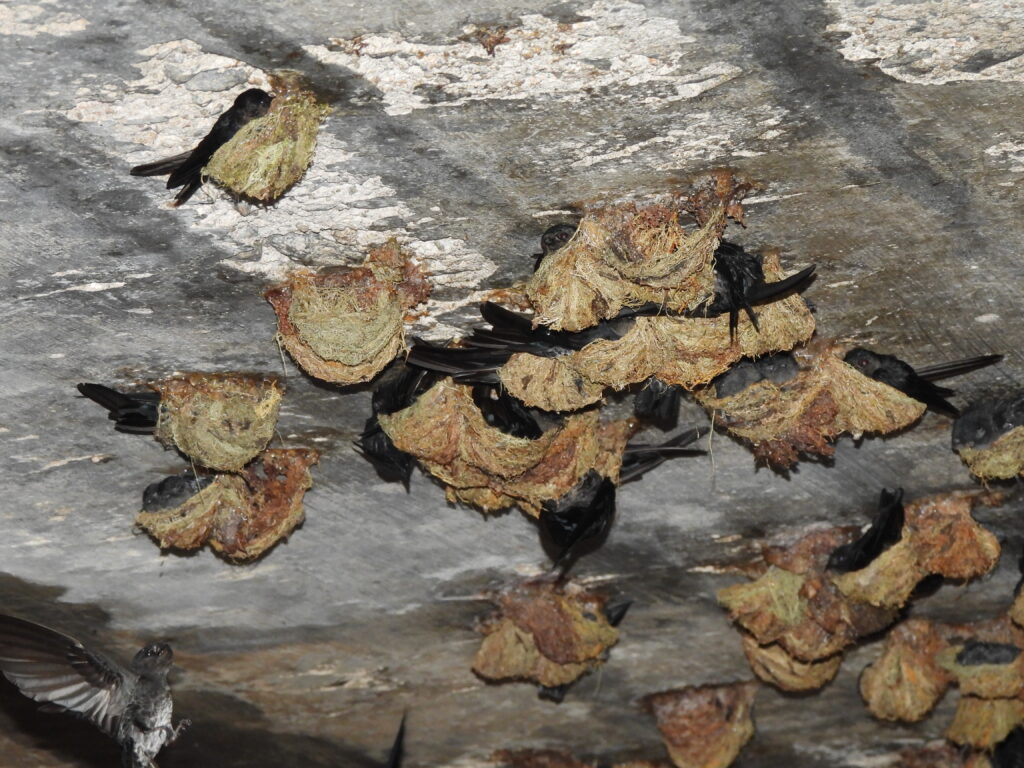
A female fire-breasted flowerpecker (Dicaeum ignipectus), a family group of little pied flycatcher (Ficedula westermanni) and a rufous-browed flycatcher (Anthipes solitaris) offered good views despite being small and rather inconspicuous, but an obliging red-headed trogon absolutely stole the show.
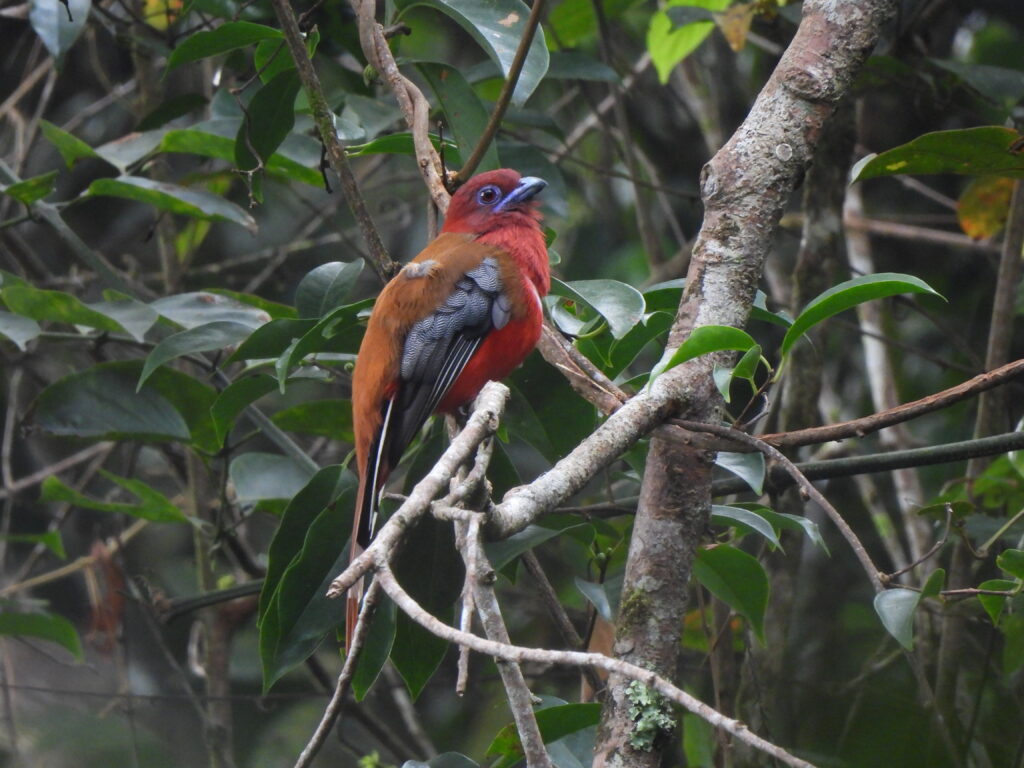
On our walk back to Fraser’s hill, we bumped into few beautiful dusky leaf monkeys (Trachypithecus obscurus) and a large troop of black-thighed surilis (Presbytis siamensis). Dozens moved from the forest towards the main square. Youngsters of this endangered species played on poles and wires and climbed on the roof of Puncak Inn while we packed before leaving to Kuala Lumpur.
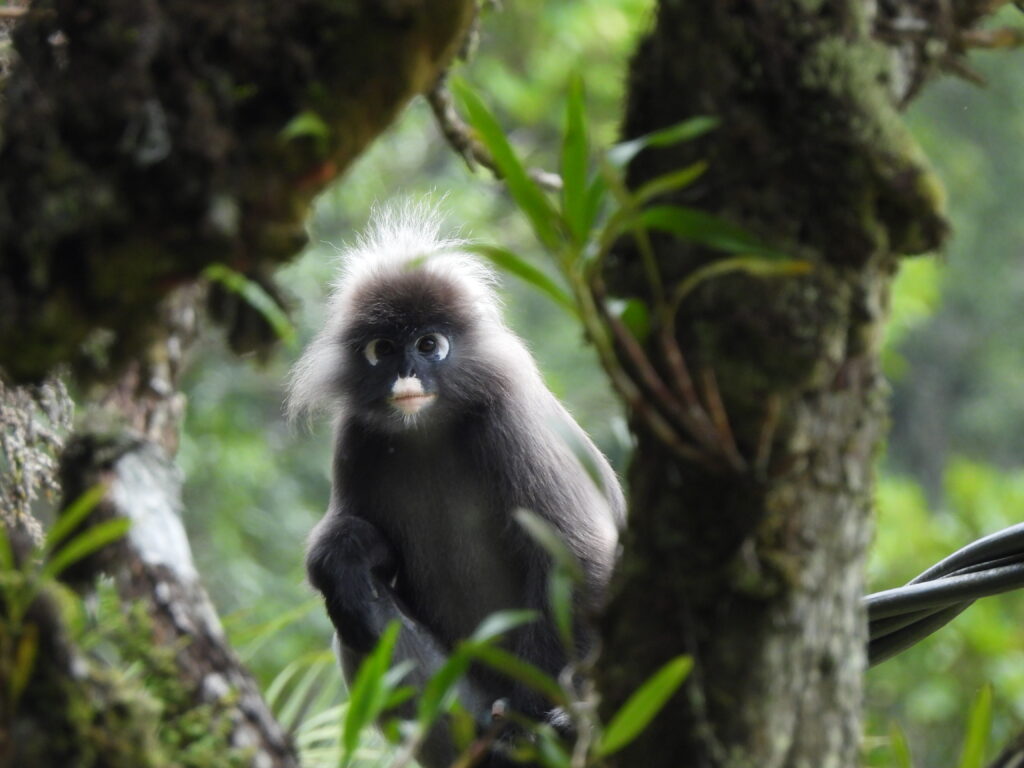
Our stay in Bukit Fraser was a fundamental part of our trip through Southeast Asia. Montane forests quickly became my favorite habitats to look for wildlife: its weather and diversity make up for the slopes and long walks. And despite the heavy rain and the mega birds dipped, Bukit Fraser eventually proved extremely comfortable, birdy, easy and memorable.

